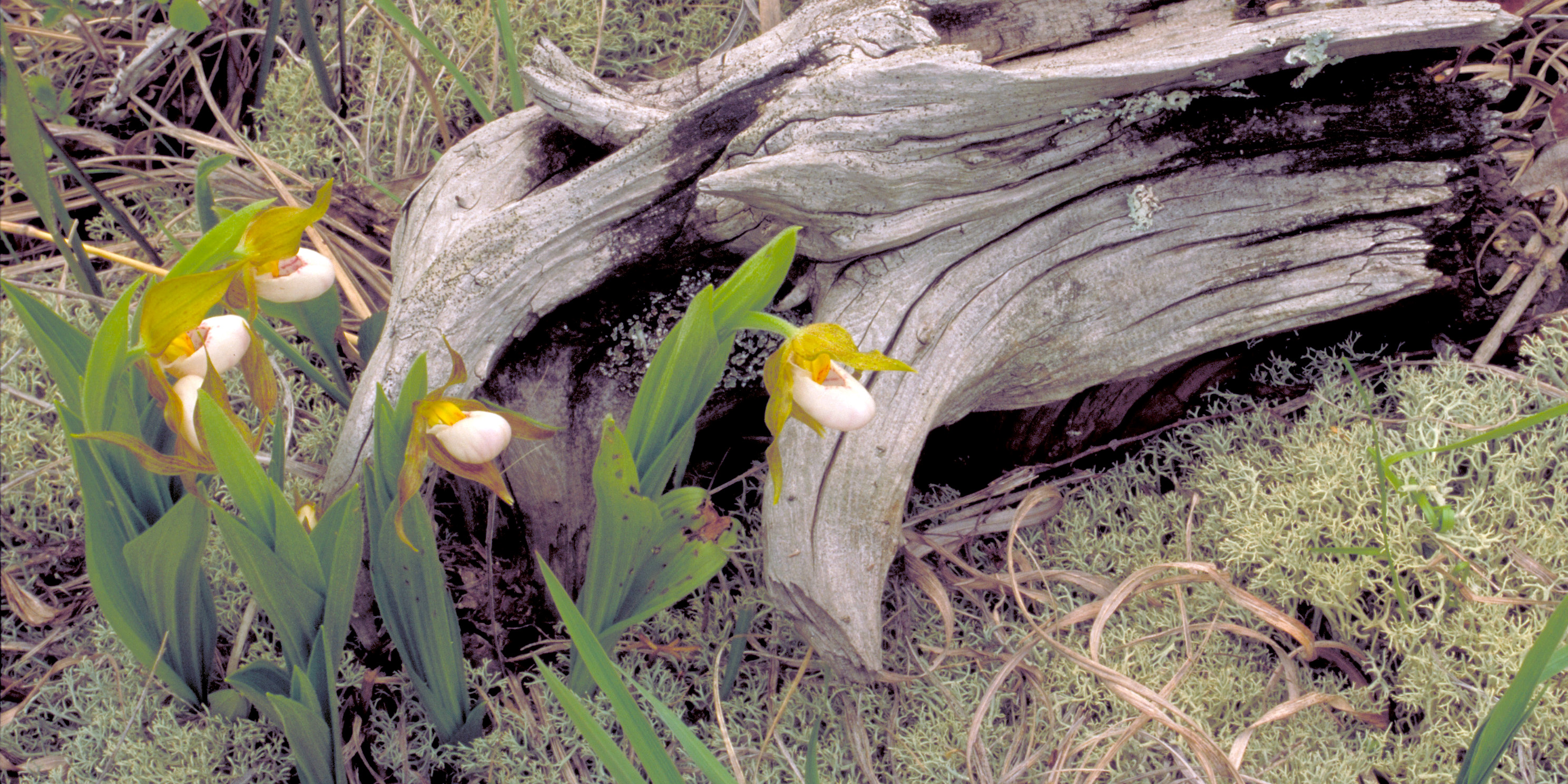Originally published 11 June 1984
The naturalist John Muir said the two greatest experiences of his life were camping with Ralph Waldo Emerson at Yosemite and finding the rare orchid calypso blooming alone in a Canadian swamp. Last spring I found a wild orchid as exceptional as a night with Emerson: a white lady’s-slipper, solitary, snow-pure, alone in a pine woods with 10,000 of its pink cousins. My Peterson wildflower guide admits the white variant of the lady’s-slipper and calls it rare and local. Rare and local, indeed! In my part of New England I have never seen another.
At least 3 million and perhaps as many as 10 million species of life now exist on the surface of the Earth. A much greater number existed in the past but have become extinct. This is fruitfulness on a scale somehow unseemly for a small planet near a backwater star. What kind of universe is it that so runs riot? What kind of universe will make room for a single white orchid when 100,000 pink ones are more than enough?
Constants in balance
Consider these coincidences, listed by Alan McRobert writing in “Sky and Telescope.”
If the so-called fine-structure constant that governs atomic interactions were slightly different from its known value, stars would either burn out very rapidly or forever remain cold and dark. The value of the constant is balanced like a penny on its edge in such a way that there is a sizable class of stars (including the Sun) that will burn with a steady light of billions of years and therefore nurture developing life.
If the strong-interaction constant that governs the force which holds atomic nuclei together were a few percent larger, protons could not form from their constituent quarks and there could be no atoms as we know them. If the constant were a few percent smaller, the nuclei of all elements heavier than helium would be unstable and there could be no such thing as a planet made of rock and iron and populated with carbon life forms.
If the gravitational constant differed slightly from its observed value, plus or minus, stars could not shine on planets long enough for life to form. If the ratio of the density of the early universe to its expansion rate had differed from its assumed value by only one part in 1055 (that’s 1 followed by 55 zeroes), this universe that began in a “Big Bang” 15 billion years ago would have quickly collapsed upon itself or ballooned so rapidly that stars and galaxies could not have formed.
Blake was right to see the world in a grain of sand and heaven in a wildflower. Physicists believe that carbon, silicon, oxygen and other heavy elements are created by fusion in the cores of stars and dispersed to space in supernova explosions. Out of this stardust new stars and planets form. Adjust the strength of the electromagnetic force or the nuclear force but slightly and you knock out of kilter the resonance in the carbon nucleus that allows three helium nuclei to come together in the cores of stars to form that element.
The fact that a single wildflower exists sets severe constraints upon the values of the fundamental constants of physics.
The anthropic principle
The cosmologist has raised the improbability of this particular life-filled universe to a principle, the anthropic principle. The anthropic principle states that since the only universe we could possibly observe is one that has the properties that allow for the appearance and evolution of life, then this universe must necessarily have those properties.
It does indeed appear at first glance as if the universe was designed expressly for our benefit. But there is another way of looking at it. The quantum physicist, when he turns his discipline to the physics of the Big Bang, tells us that the equations allow for multiple universes to pop into existence like bubbles, an infinite number of universes springing into existence when the cork is popped in some kind of hyperspace and hypertime. In every universe physical constants and conditions assume random values, and the universe that we know, this universe of sand and wildflowers, is only one of that limited class of universes that allow for the formation of our kind of stars and our kind of matter. The coin is tossed 1055 times and comes down in every possible configuration, and our night is just one of 1055 nights, some crammed with stars and life, some forever dark and lifeless, and all but one of which we will never know.
And who am I to say that such things cannot be, when one white orchid takes my breath away?



